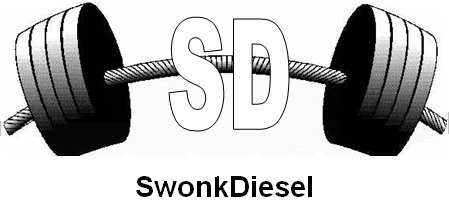Linear periodization has always been a foundation of many strength training programs. But let's be serious, the body does not adapt in a linear fashion. The body goes through periods of stagnation along with periods of explosion. Many times gains can come in a burst after being at a sticking point for months. So, to say that linear periodization is the best way to go leaves a lot to be gained. There are many other philosophies on periodization but I am not going to get into all of those today. I am more interested in discussing the idea of a deload, or rest period for the body.
As you may know when training, in some way, the idea is to make increases. Whether it be the intensity, the volume, or maybe the exercise itself, increases are ideal. Progression. Well for most of us weathered trainees there are points in our training where a wall is hit and gains are not being reached as we had hoped for. Sometimes we have just hit a ceiling but many times our body has just been pushed so hard for so long it just needs a rest. And that there is the idea behind a deload.
Deloading can be done in many different ways. It can be one week or multiple weeks. It can involve decreasing the load lifted or the volume of the workout. It can be a week of totally different exercises that cause less strain on the body mechanically. Depending on the goals and type of workout really determines the type of deload. When working towards greater strength and power the ideal of a deload would be to decrease the volume, maybe even to 50%. By doing so one can keep the intensity high and maybe even get a few more pounds on each lift and still have the body rested because of the decrease in volume. A person who looks more at volume for their workout, maybe an endurance athlete, might keep the volume normal but cut the weight. The body is still pushing through the same number of reps but the amount of weight being lifted is not nearly as tough as normal, therefore the body can recover. Those who do a lot of running, whether long distance or sprint-type training, may take a week where they avoid foot contacts during training. By this I mean avoiding the treadmill or track and doing a bike workout or going to the pool and doing some water training. This type of deload takes the strain off of the joints and allows them to recover since they have been beaten on so much over the past months of training.
You may be wondering why not just take a week off period. Well for most of us gym junkies, it's almost impossible to be sedentary and stay out of the the place we call our church. Beyond that, doing absolutely nothing would give us rest, but engaging in an active recovery (a deload) gives our body the rest it needs while still making gains and improving our performance. There are instances where a person or athlete does need to just take a couple days off. Overtraining, or the verge of it, is a good reason to just sit back and do nothing for a couple days. Either way, let the body heal. Dropping a workout down a notch for a week can catapult you into the next phase of your workout where you could see some great gains that you hadn't seen in a while. Not to mention after a week of reduced load you will be itching to get back at it 100%, I know i can't wait for the week following a deload.
If you are new to the gym, or you are a trainer with a client who has just began weight training then a deload will not be as necessary at this point. Beginners are going to see a lot more gains than are experienced lifters plus for the first 8-10 weeks of training there are going to be a lot of neural adaptations. So their strength is going to rise on more of a linear path. With a new trainee there may be 10-12 weeks of hard workouts before a deload where as with athletes or lifting vets it may be more around 4-6 weeks of hard training before a week of recovery. Everything is individual and it needs to be played around with to find the best fit for each person. Just know at some point there needs to be some type of recovery. The body can't constantly be pushed to the edge without it falling off at some point. So give it a step back every now and then.
If you are interested in more info about deloading there's an E-book by Eric Cressey called "The Art of the Deload". Its very helpful in teaching the different ways of deloading and some reasons behind them.
Monday, April 13, 2009
Subscribe to:
Post Comments (Atom)




No comments:
Post a Comment